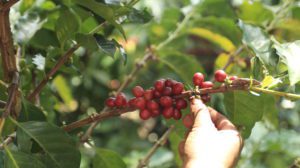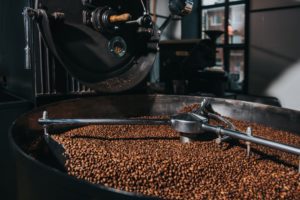Are single-origin coffees really better than blends? While many coffee aficionados rave about single-origin, there are actually several priorities to balance. There is no quick answer to: is single-origin worth all the hype? After we present all the factors, you can weigh single-origin coffee based on your preferences. Your own curiosities about flavor and origin will play a big role in your decision.

Overview
Most bags of coffee in the world are of blended origin. Recently, single-origin coffees became popular. The beans are grown in one area, so the flavor represents that area, at least during that growth season. Meanwhile, blends involve beans from different places. Blends are popular because the flavor is more consistent. They’re usually less expensive. While not necessarily worse, there are a lot of factors involved.
When looking at the big picture, we see that blends are great for coffee growers, harvesters and sellers because they allow them to offer consistency to customers. Contrarily, single-origin coffee involves more risk for producers because weather conditions can vary. The flavor can wander in different directions. Luckily, coffee lovers from outside the coffee belt have grown to appreciate single-origin coffee. It’s more of an experience from that area.
Origin Stories: for Singles and Blends
What is single-origin coffee?
For a coffee to be labeled single-origin, the beans need to have been grown within the same few miles, and usually on the same coffee farm. Some single-origins even come from a only small section of the farm, or from a very small grower. The coffee fruit and seeds (beans) also need to be processed on the same farm.
Since the coffee comes from one place, it shows that locale’s authentic flavor. The area’s coffee trees were all subjected to the same conditions. This matters because many factors affect coffee’s flavor. They include the temperature, amount of shade and soil quality. The amount and frequency of rain are very important too, of course. An often-underappreciated factor is drainage in that area. Does water stick around, or run off? Water runs off in high, mountainous regions.
Since the flavor profile of single-origin coffee varies with the seasons and the weather, it is not always available year-round. The changes in growing cycles and conditions can’t be mitigated by supplementing with other beans. Therefore, single-origin coffee tends to be more expensive. Everyone involved in production must charge more. Basically, they need more money up front since they don’t have the option of safety from pulling in beans from different areas.
The great news is, single-origin coffee guarantees the taste reflects the location where it was grown. Coffee lovers can sample different places’ coffee. Embarking on a world tour of coffee . . . or at least an equatorial-countries tour. . . is a possibility! The expanses of a person’s coffee tour are only limited by the number of single-origin coffees they can order.

How Are Coffee Blends Made?
While the recipe for crafting a bag of single-origin is as straightforward as it gets, a bag of blended coffee wasn’t created under as many rules. The beans usually come from 2-4 different areas. These can be different countries, regions or just different farms in the same region.
Some blends are created for different purposes—to supplement beans from one area that didn’t make it. Others are carefully crafted to create certain flavors. A steady, replicable flavor is important for big coffee brands. Blends’ reputation is tainted by some producers who try to cut costs by filling in with worse beans. However, blending different beans well takes skill and care. Many blends have complex, delightful flavor profiles.
Another thing to note about blends is that a small geographic region may contain a lot of variation. While countries in the coffee belt may seem small compared to the U.S. or Canada, the altitude, temperature and rainfall can vary a lot in one country. Coffees grown at the same altitude in Nicaragua and Panama may taste more similar than coffees grown at different altitudes in the same country. Although Central America has small countries, the topographical and climactic variation is rich.
Single-Origin and Blend Taste Profiles
Bean growth is very interesting . . . but let’s get down to business: taste! What difference does a coffee drinker detect once they start sipping?
Single-Origin Taste
The unique flavors of a single-origin coffee are allowed to shine. Single-origins are celebrated for their authenticity to that region. While most people’s idea of the range of “normal coffee” flavor is controlled by common blends, single-origins are allowed to have outlying flavor profiles. That’s not to say that single-origins have odd or outrageous flavors. They still taste like coffee. However, they’re unrestricted by norms pulling flavors toward the middle. Drinking them is an experience, one people can savor.
Single-origins are usually bolder. Their flavor isn’t as watered down or balanced. Single origins can be more robust or acidic and citrusy. They also deliver stronger aromas. Bright, floral notes are possible. Light roasts can be used in cold brews.
The Tastes of Blends
The major advantage of a blend, in terms of taste, is the consistent flavor. Since so many factors affect the growth of coffee fruit and the beans (seeds) inside, a single-origin’s flavor can shift much more than a blend’s. A blended recipe gives the coffee’s flavor an anchor.
Blends suit the general public. They’re used as espresso. When adding a lot of milk, crème and sugar, a blend is usually the destination. Doctored-up coffee like cappuccinos, lattes and indiscriminate iced coffees are often made with blends.
Nevertheless, blends can be expertly crafted. They can even deliver maximum flavor. Mixing different coffee beans is no easy task. Consider those blending drinkable coffees to be mixologists.
Final Decision Coffee Notes
If you haven’t decided whether single-origins are worth the chance of variation and sometimes the extra price. . . honestly, just relax about it all! Why not dabble in single origins and see what your palette can detect and enjoy? What might you discover about coffee from one certain place? Meanwhile, blends won’t lead you to discover much unless they are successfully mixed to make a strong flavor statement.
Traceable Origin Means Traceable Impact
One last advantage of single-origin coffee is that locating coffee beans to the precise coordinates of growth allows purchasers to trace the impact of a purchase. Buying Starbucks or Folgers doesn’t make much difference to anyone anywhere. It’s like buying Hershey’s bar at a big box store like Target. Your purchase is a drop in a large, complex, uncaring bucket.
Meanwhile, buying a single-origin coffee more directly supports the grower and harvester. Depending on the sourcing, the actual financial support (and risk insurance) that makes its way to the grower can vary widely. The U.S. produces only a tiny bit of coffee. Many people buy single-origin coffees nowadays because they can trace their contribution down in Latin America. So conscious purchasers may look at any of the following factors for coffee:
- Fair-trade
- Environmentally sustainability
- Organic plants and organic treatment of plants
- Supporting a good cause
Gourmet Coffee Supporting Education and Future Development
Subida Coffee Co. is helping to make a name for Honduran coffee, which many people still think is only suitable for blends. However, Subida’s single-origin coffee is grown at a high-altitude, non-profit farm that supports the education of around 40 teenage boys. They receive a regular high school education along with training in agriculture and aquaculture. Subida’s gourmet coffee can help stimulate the local economy of Santa Rosa de Copán, and give single-origin Honduran coffee from that region the recognition it deserves. Although many people aren’t familiar with Honduras, coffee in Honduras is a lucrative export. A coffee purchase can make a big difference there.

